System Overview
The fuel tank stores the fuel supply. An electric fuel pump, located in the fuel tank within the modular fuel sender assembly, pumps fuel through an in-line fuel filter to the fuel rail assembly. The pump provides fuel pressure more than is needed by the injectors. The fuel pressure regulator keeps fuel available to the injectors at a regulated pressure. A separate fuel pipe is used to return fuel to the fuel tank.
Unleaded fuel must be used with all gasoline engines for proper Emission Control System operation. Using unleaded fuel will also decrease spark plug fouling and extend engine oil life. Leaded fuel can damage the Emission Control System, and its use can result in loss of emission warranty coverage.
All vehicles with gasoline engines are equipped with an Evaporative Emission System that minimizes the escape of fuel vapors to the atmosphere.
Fuel Tank
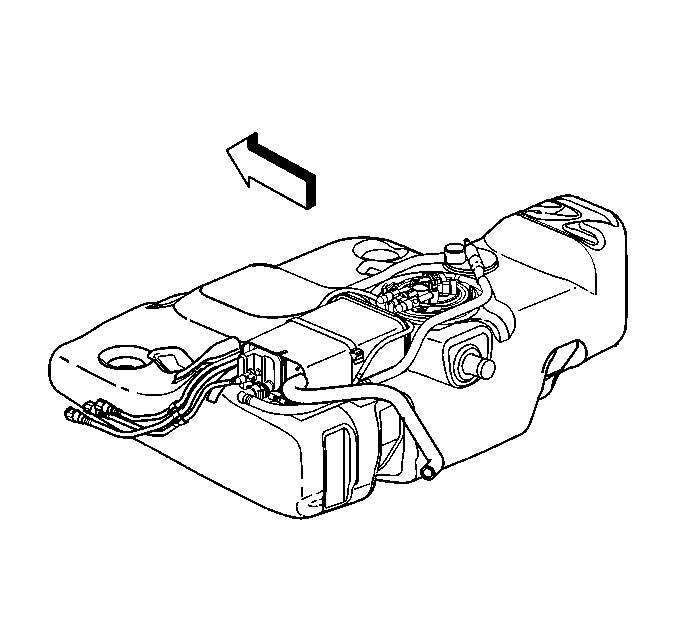
The fuel tank is located in the rear of the vehicle and is used to store the fuel supply. The fuel tank is molded from high density polyethylene and is held in place by two metal straps that secure it to the vehicle. The fuel tank shape includes a reservoir in order to maintain a constant supply of fuel around the fuel pump strainer during low fuel conditions and aggressive vehicle maneuvers. A fuel tank filler pipe check-valve tube is attached to the fuel tank and extends from the fuel tank inlet to the reservoir. The fuel tank filler pipe check-valve is located inside the fuel tank filler pipe check-valve tube and prevents fuel from splashing back out of the fuel tank filler pipe during refueling.
The tank also contains a fuel vapor vent valve with roll-over protection. The vent valve also features a two phase vent calibration which increases fuel vapor flow to the canister when operating temperatures increase the tank pressure beyond an established threshold.
The fuel tank contains 3 rollover valves that prevents fuel from entering the fuel pipes in the event of a vehicle rollover. The rollover valves are not repairable.
Fuel Tank Filler Pipe
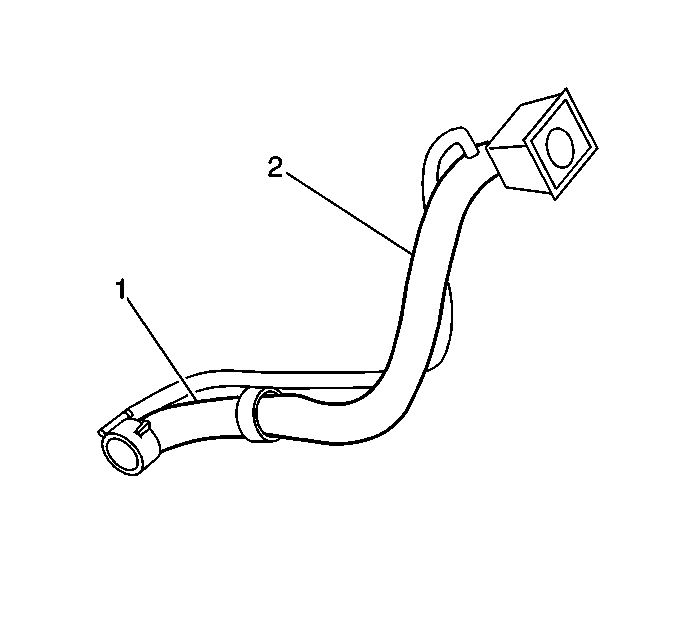
The fuel tank filler pipe carries dispensed fuel from the fuel nozzle to the fuel tank.
In order to prevent refueling with leaded fuel, the fuel tank filler pipe (2) has a built-in restrictor and deflector. The fuel tank filler pipe is connected to the fuel tank filler extension (1) by clamps. Inside the fuel tank filler pipe is a check-valve that prevents fuel from splashing back out of the fuel tank filler pipe during refueling.
Fuel Tank Filler Pipe Cap
Notice: Use a fuel tank filler pipe cap with the same features as the original when a replacement is necessary. Failure to use the correct fuel tank filler pipe cap can result in a serious malfunction of the fuel system.
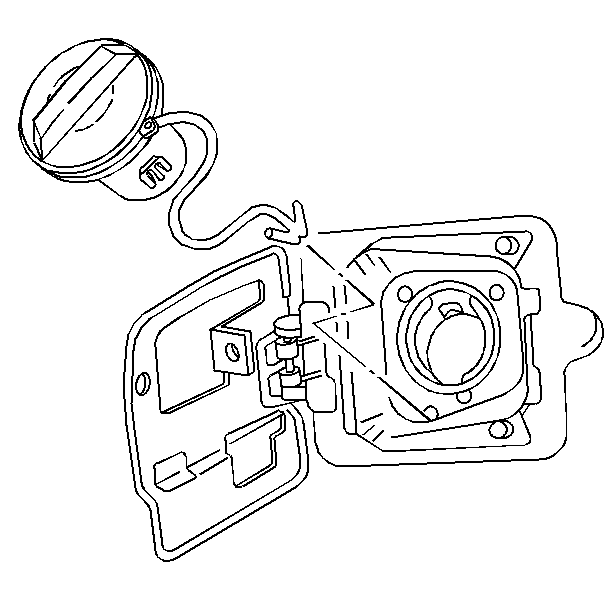
The fuel tank filler pipe is equipped with a quarter-turn type fuel tank filler pipe cap. In order to install the fuel tank filler pipe cap, turn the fuel tank filler pipe cap clockwise until a clicking noise is heard. A built-in device indicates that the fuel tank filler pipe cap is fully seated. A fuel filler cap that is not fully seated may cause a malfunction in the Emission System. The fuel fill cap is also part of the (ORVR) EVAP System and has a tether connected to the fuel fill door.
Modular Fuel Sender Assembly

The modular fuel sender assembly consists of the following major components:
| • | Fuel sender strainer |
| • | Fuel pump strainer |
| • | Roll-over valve |
| • | Fuel level sensor |
| • | Fuel tank pressure sensor |
Fuel Level Sensor (Class II)
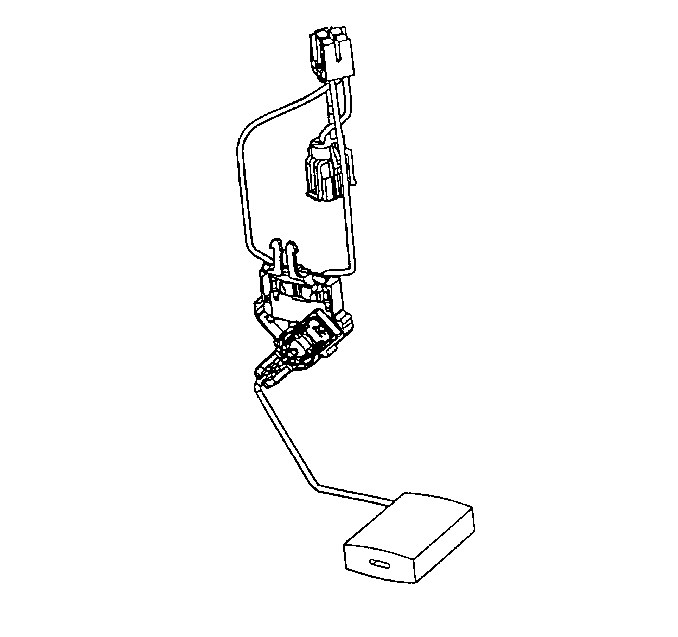
The fuel level sensor consists of the following components: float, the wire float arm, and the ceramic resistor card. The fuel level sensor is mounted on the modular fuel sender assembly and is used as an input to the PCM. The PCM uses this information as a fuel level input for various diagnostics. In addition the PCM transmits the fuel level over the Class 2 communication circuit to the IP cluster. This information is used for the IP fuel gauge, and low fuel warning indicator if applicable.
Fuel Pump (VIN K)
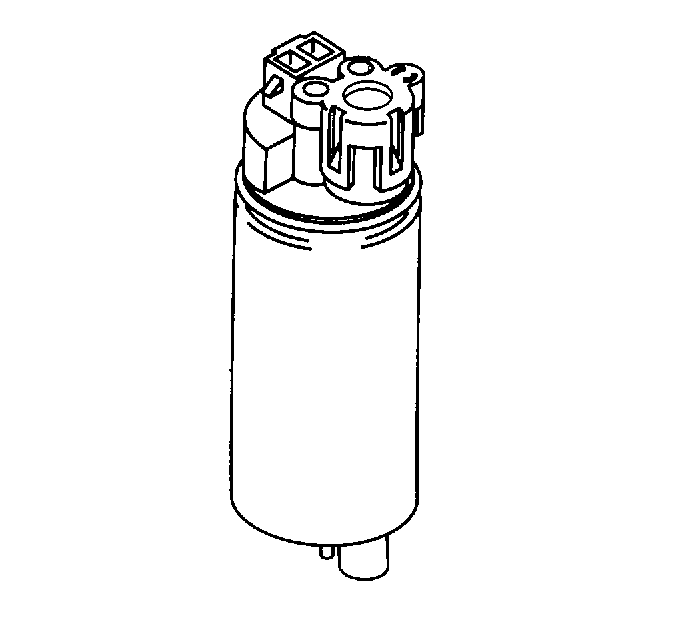
The fuel pump is mounted in the fuel reservoir within the modular fuel sender. The fuel pump is an electric high pressure gerotor pump. The fuel is pumped to the fuel rail at a specified flow and pressure. Excess fuel returns to the fuel tank by a return pipe. The fuel pump delivers a constant flow of fuel to the engine even during low fuel conditions and aggressive vehicle maneuvers. The electric fuel pump operation is controlled by the powertrain control module (PCM) through a Fuel Pump relay. The fuel pump flex pipe acts to dampen the fuel pulses and noise generated by the fuel pump. The fuel pump is serviced as part of the modular fuel sender assembly.
Fuel Pump (VIN 1))

The fuel pump is mounted in the fuel reservoir within the modular fuel sender. The fuel pump is an electric high pressure rollervane pump. The fuel is pumped to the fuel rail at a specified flow and pressure. Excess fuel returns to the fuel tank by a return pipe. The fuel pump delivers a constant flow of fuel to the engine even during low fuel conditions and aggressive vehicle maneuvers. The electric fuel pump operation is controlled by the PCM through a Fuel Pump relay. The fuel pump flex pipe acts to dampen the fuel pulses and noise generated by the fuel pump. The fuel pump is serviced as part of the modular fuel sender assembly.
Roll-over valve
The Fuel System contains multiple rollover valves that prevents fuel from entering the fuel pipes in the event of a vehicle rollover. The rollover valves are serviced as part of the modular fuel sender assembly and fill limiter vent valve.
Fuel Pressure Regulator Assembly
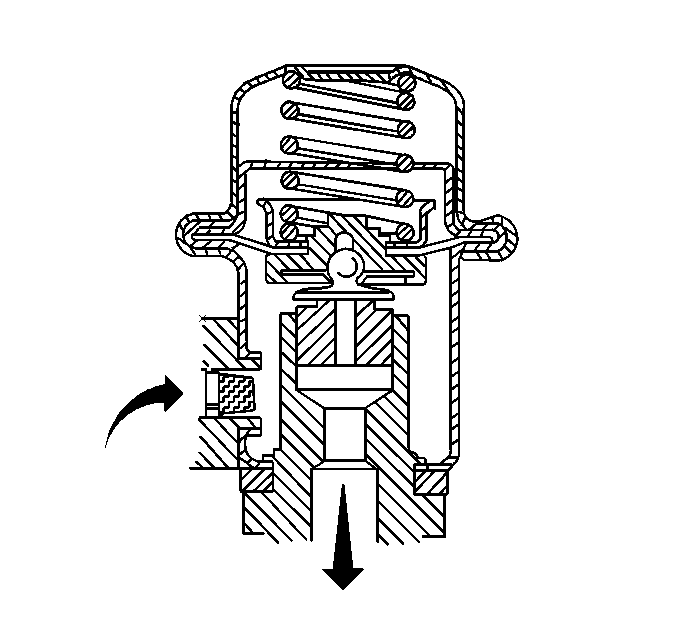
The fuel pressure regulator is a diaphragm-operated relief valve with fuel pump pressure on one side and manifold pressure on the other. The function of the fuel pressure regulator is to maintain the fuel pressure available to the fuel injectors at 3 times barometric pressure, adjusted for engine load.
The fuel pressure regulator attaches to the fuel rail on the fuel return side and may be serviced separately.
If the fuel pressure is too low, poor performance may result. If the pressure is too high, excessive odor and a Diagnostic Trouble Code (DTC) may result.
Fuel Pump Strainer
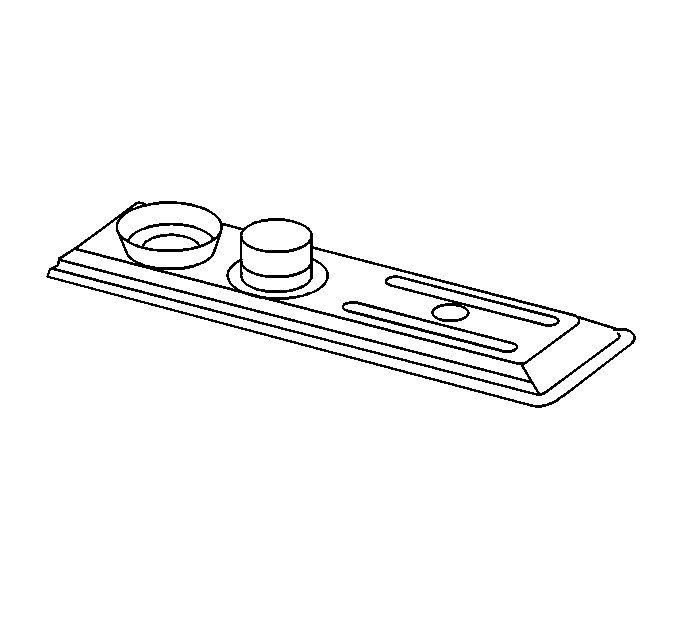
The fuel pump strainer attaches to the lower end of the modular fuel sender assembly. The fuel pump strainer is made of woven plastic. The functions of the fuel pump strainer are to filter contaminants and to wick fuel. The life of the fuel pump strainer is generally considered to be that of the fuel pump, it is self-cleaning and normally requires no maintenance. Fuel stoppage at this point indicates that the fuel tank contains an abnormal amount of sediment or water, in which case the tank should be thoroughly cleaned and replace the plugged fuel pump strainer with a new one.
In-Pipe Fuel Filter
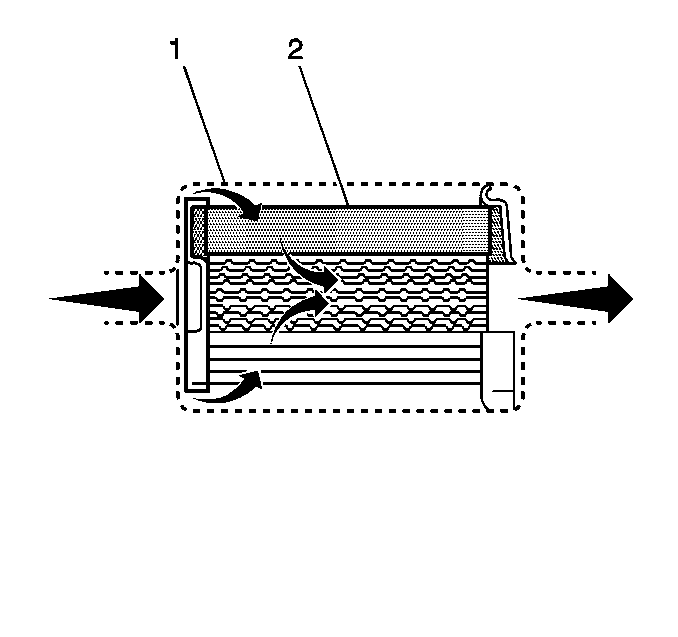
The fuel feed pipe has a steel fuel filter installed ahead of the Fuel Injection System. The paper filter element (2) traps particles in the fuel that may damage the Injection System. The filter housing (1) is made to withstand maximum Fuel System pressure, exposure to fuel additives, and changes in temperature. The fuel filter has a quick connect inlet fitting and a threaded outlet fitting. The threaded fitting is sealed with an O-ring. There is no service interval for fuel filter replacement. Replace a restricted fuel filter.
Fuel Feed and Fuel Return Pipes
The fuel feed and fuel return pipes carry fuel from the modular fuel sender assembly to the Fuel Injection System and back to the modular fuel sender assembly.
Quick Connect Fittings
Caution: In order to reduce the risk of fire and personal injury observe the
following items:
• Replace all nylon fuel pipes that are nicked, scratched or damaged
during installation, do not attempt to repair the sections of the nylon fuel
pipes • Do not hammer directly on the fuel harness body clips when installing
new fuel pipes. Damage to the nylon pipes may result in a fuel leak. • Always cover nylon vapor pipes with a wet towel before using a
torch near them. Also, never expose the vehicle to temperatures higher than
115°C (239°F) for more than one hour, or more than 90°C (194°F)
for any extended period. • Apply a few drops of clean engine oil to the male pipe ends before
connecting fuel pipe fittings. This will ensure proper reconnection and prevent
a possible fuel leak. (During normal operation, the O-rings located in the
female connector will swell and may prevent proper reconnection if not lubricated.)
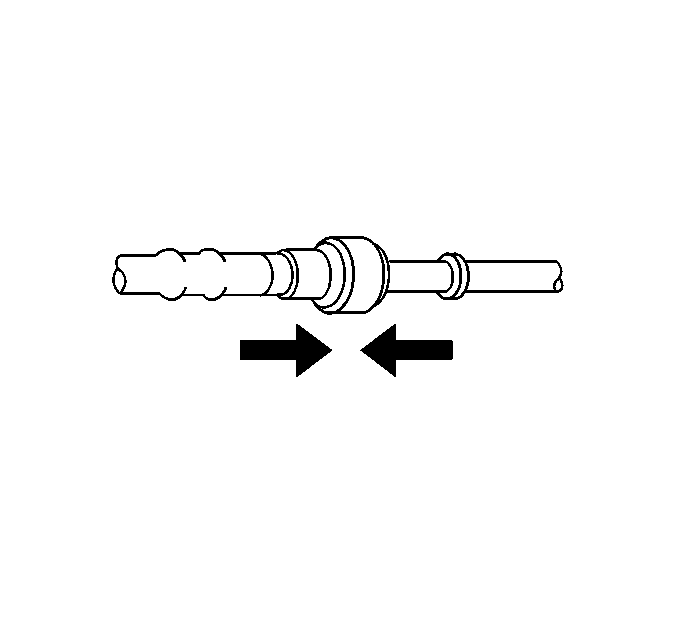
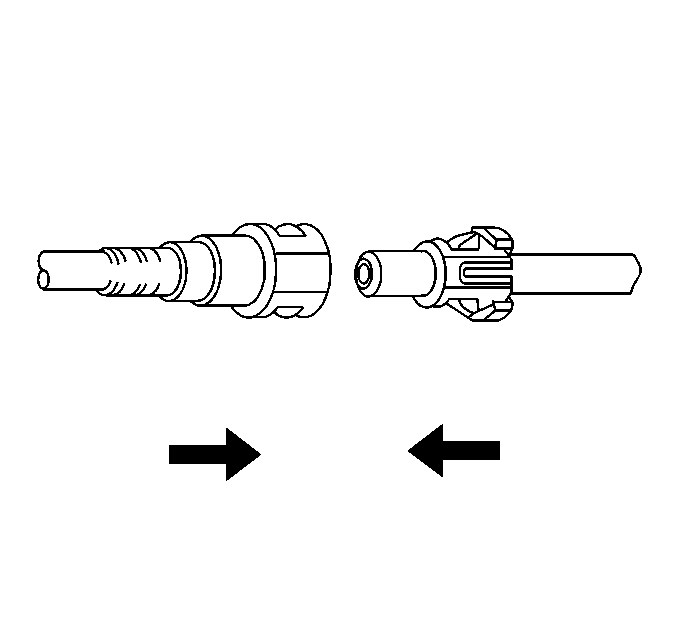
Quick connect type fittings provide a simplified means of disconnecting and connecting Fuel System components. Depending on the vehicle type, there are two types of quick connect fittings. Each are used at different locations in the Fuel System. Each type of quick connect fitting consists of a unique female connector and a compatible male fuel pipe end. An O-ring is located inside the female connector, witch provides the fuel seal. Integral locking tabs or fingers hold the quick connect fittings together.
Nylon Fuel Pipes
Caution: In order to reduce the risk of fire and personal injury observe the
following items:
• Replace all nylon fuel pipes that are nicked, scratched or damaged
during installation, do not attempt to repair the sections of the nylon fuel
pipes • Do not hammer directly on the fuel harness body clips when installing
new fuel pipes. Damage to the nylon pipes may result in a fuel leak. • Always cover nylon vapor pipes with a wet towel before using a
torch near them. Also, never expose the vehicle to temperatures higher than
115°C (239°F) for more than one hour, or more than 90°C (194°F)
for any extended period. • Apply a few drops of clean engine oil to the male pipe ends before
connecting fuel pipe fittings. This will ensure proper reconnection and prevent
a possible fuel leak. (During normal operation, the O-rings located in the
female connector will swell and may prevent proper reconnection if not lubricated.)
Nylon fuel pipes are designed to perform the same job as the steel or rubber fuel lines they replace. Nylon pipes are constructed to withstand maximum Fuel System pressure, exposure to fuel additives, and changes in temperature. There are two sizes used: 3/8" ID for the fuel feed, and 5/16" ID for the fuel return, and are used on the modular sender. Nylon fuel pipes are somewhat flexible and can be formed around gradual turns. However, if forced into sharp bends, nylon pipes will kink and restrict fuel flow. Also, once exposed to fuel, nylon pipes may become stiffer and are more likely to kink if bent too far. Special care should be taken when working on a vehicle with nylon pipes.
Quick Connect Fittings
Quick connect type fittings provide a simplified means of installing and connecting Fuel System components. Depending on the vehicle model, there are two types of quick connect fittings, each used at different locations in the Fuel System. Each type of quick connect fitting consists of a unique female connector and a compatible male fuel pipe end. O-rings located inside the female connector, provide the fuel seal. Integral locking tabs or fingers hold the quick connect fittings together.
Fuel Pipe O-rings
Fuel feed and return pipe threaded connections at the fuel rail and fuel filter are sealed with replaceable O-ring seals. These O-rings seals are made of a special material, and should only be serviced with the correct service part.
Fuel Tank Pressure Sensor
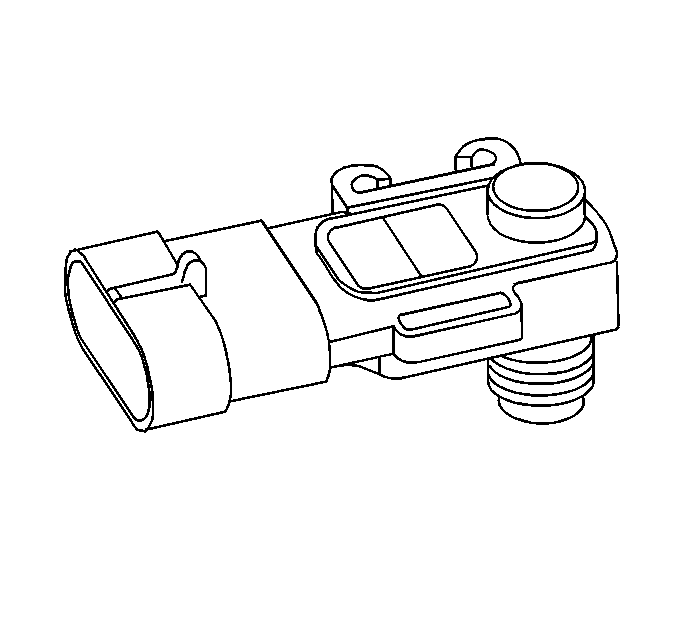
The fuel tank pressure (FTP) sensor measures the difference between the air pressure, or vacuum, in the fuel tank and the outside air pressure.
The sensor mounts at the top of the fuel tank sending unit. The PCM supplies a 5 volt reference voltage and ground to the sensor. The sensor provides a signal voltage between 0.1-4.9 volts to the PCM. When the air pressure in the fuel tank is equal to the outside air pressure, such as when the fuel fill cap is removed, the output voltage of the sensor will measure 1.3-1.7 volts.
When the air pressure in the tank is 4.5 inches H2O (1.25 kPa), the sensor output voltage should measure 0.5 ± 0.2 volts (1.25 kPa).
The sensor voltage increases to approximately 4.5 volts at 14 inches of H2O (-3.75 kPa).
